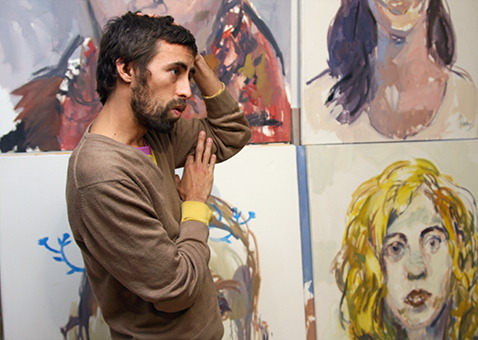wanderlust
Show Me A Way Through Neukölln

Hurrying down Karl Marx Strasse in a bid to be on time for the Art Grain walking art tour through Neukölln, which is hosted by WerkStadt, I let out an exasperated sigh – why does everything ‘hip’ and ‘arty’ have to be in bloody Neukölln? I don’t see what the fuss is about, as far as I’m concerned the place is full of sleazy middle aged men and takes forever to get to, not exactly a recipe for success. Turning down a side street I am plunged into near complete darkness and keep my belongings close, half expecting to be robbed in the same way two of my Neukölln dwelling friends were recently.
Luckily I encounter hardly anyone, and make it through the depths of Neukolln’s backstreets unscathed, arriving at kunstraum t27 just in time to catch artist Marcus Ahlers talking about his work as part of the exhibition Situative Systeme. Based on his systematic approach to art and science, Ahlers works are a bizarre mix of both household and more technical objects such as a vaccum cleaner and a cutlery tray – you can easily imagine him at home in his kitchen taking apart the toaster, much to the annoyance of his family/room-mates.

The next stop is studio and art space B-Zwinger. Located in a former butcher’s shop, this Aladdin’s cave of artwork belongs to artist duo GODsDOGs, made up of Britta and Ron Helbig. Four of their installation works are on show, including ‘Canine Cathedral’, a piece made out of an old Pigeon house, and the slightly disturbing yet fun ‘Wildweschel’ paintings.
‘Wildweschel’ paintings by GODsDOGs at B-Zwinger. Photo: Chris Phillips

We stay for five minutes to take in the array of shapes and colours before being led to the next point on our tour, but not before an interesting history lesson on the surrounding area by our tour leader and Neukolln enthusiast Jason Benedict. He explains how the district as we know it was born in 1912, an amalgamation of previous villages which had formed greater Berlin. Moving to the beautiful Kornerpark he elaborates on the history of the Kornerkiez neighbourhood and is quick to defend Neukolln from its ‘ghetto’ reputation.
Be the first to write a comment.
Your feedback

